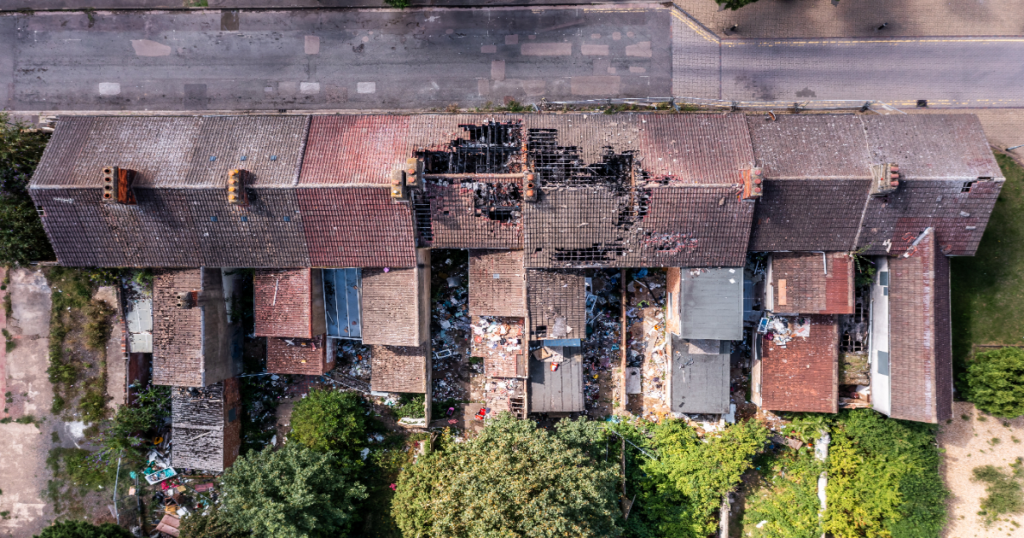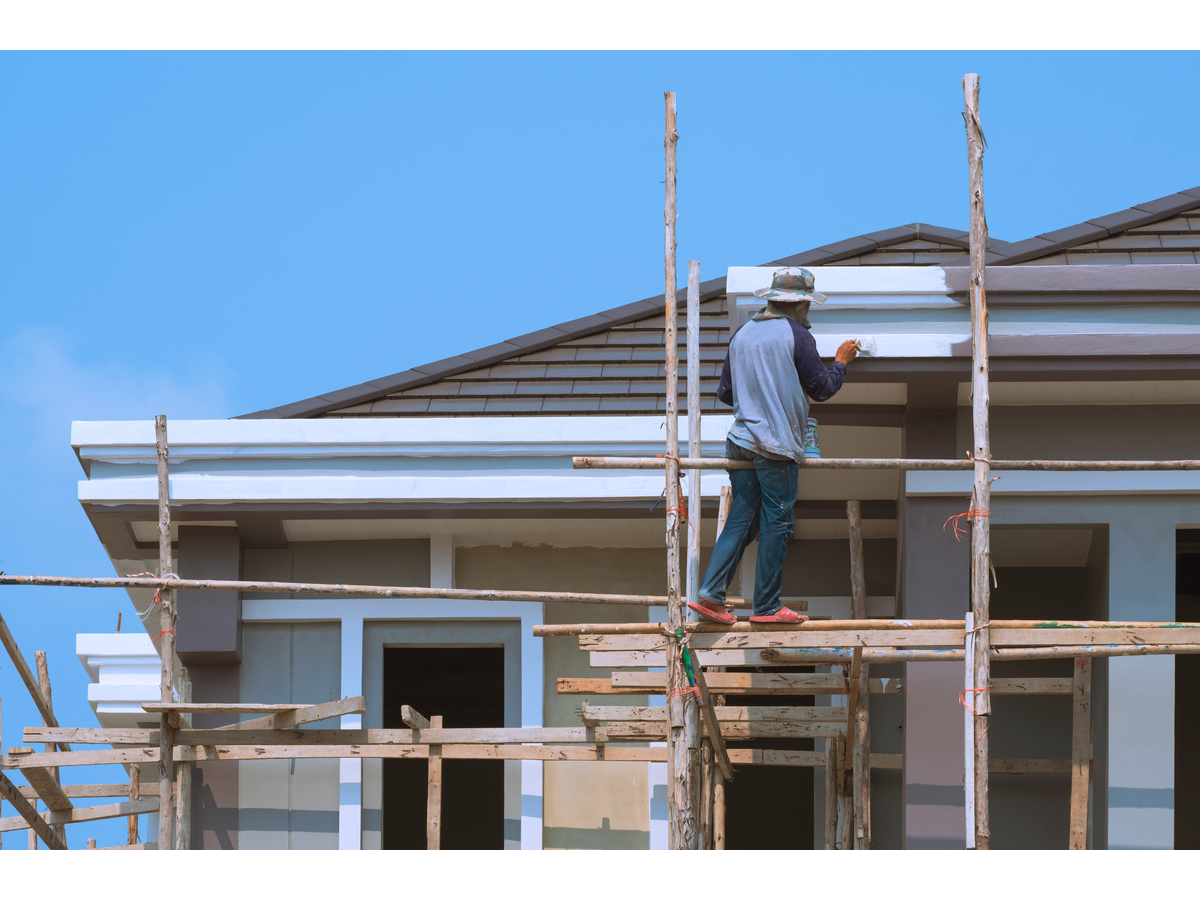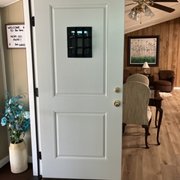Fire-proof eaves are roof edges that overhang the face of a wall at the bottom of the roofline. They serve both functional and aesthetic purposes. Often, eaves extend beyond the side of the building to provide weather protection for the exterior walls and windows.
Eaves are not just a structural component; they define the style of the home. Depending on the architectural style, they can be simple and straight or have ornamental designs, like brackets or corbels. The eaves’ design often complements the building’s overall aesthetic from colonial to modern homes.
Functional Roles of Eaves
Weather Protection: Eaves help divert water away from the foundation and walls of the home. Gutters and downspouts are commonly attached to eaves to direct rainwater away.
Energy Efficiency: By providing shade, eaves can reduce the amount of sunlight directly hitting windows, thereby reducing cooling costs in warm climates.
Structural Integrity: While less commonly considered, eaves can also contribute to the structural integrity of the roofing system by distributing weight more evenly.
Common Components of Eaves
Fascia: The vertical edge attached to the roof structure’s ends.
Soffit: The underside of the eave, which can be open or closed.
Gutter: Optional component that collects and directs rainwater away from the building.

Importance of Fire-Proof Eaves
Vulnerability to Fire
- Entry Points for Embers
Eaves, especially open, can be entry points for flying embers during a wildfire. Embers can easily lodge in open eaves and ignite the home from this point.
- Proximity to Combustible Material
Eaves are often near trees, shrubs, or other combustible materials. This proximity makes them susceptible to catching fire, which can then quickly spread to other parts of the home.
Fire-Spread Mechanism
- Role of Embers
Embers from a distant wildfire can travel significant distances carried by the wind. When these embers come into contact with eaves, especially those made of combustible material, the risk of a house fire dramatically increases.
- Radiant Heat
Aside from embers, radiant heat from a nearby fire can also compromise the integrity of the eaves and their material. Even without direct contact with flames, the heat can cause certain materials to catch fire.
Fire Vortices
In extreme conditions, fire can create mini-tornadoes or “fire vortices” that can lift embers into the air, depositing them in vulnerable areas like eaves.
Wider Impact on Community
Fire-resistant eaves don’t just protect individual homes; they can also reduce the overall spread of fire within a community. Homes less susceptible to catching fire act as a barrier, potentially slowing down the wildfire’s progress.
Legal Implications
Local laws and building codes may require fire-resistant construction methods, including fire-resistant eaves in some regions. Failure to comply could lead to legal repercussions, aside from the obvious safety risks.
Insurance Benefits
A fire-resistant home, including fire-resistant eaves, can lower insurance premiums, making it financially beneficial in the long run.
Reference:
Information on the vulnerability of eaves to fire and methods of fire spread is based on UCANR’s Building and Eaves guidelines.
Types of Eaves
Open Eaves
Open eaves lack a soffit and expose the rafter tails and other roof elements. This design is often preferred for its aesthetic appeal but comes with certain fire risks.
Fire Risks
Ease of Ember Entry: The absence of a soffit means embers can easily become lodged between rafter tails or other exposed elements.
Combustible Material: Open eaves are often made from wood or other materials that easily catch fire.
Mitigation Strategies for Open Eaves
- Installing metal flashing to cover the rafter tails
- Applying fire-resistant coatings
Boxed Eaves
Boxed eaves are enclosed with a soffit, hiding the rafter tails and creating a more finished look. This design is less aesthetically variable than open eaves but offers better fire protection.
Fire Risks
Potential for Ignition: While generally safer than open eaves, boxed eaves can still pose a risk if made from combustible materials like certain types of wood or vinyl.
Complexity in Construction: The boxed-in nature can make it difficult to retrofit with fire-resistant materials.
Mitigation Strategies for Boxed Eaves
- Use of fire-resistant soffits
- Application of fire-retardant paint or coatings

Fire-Resistant Materials for Eaves
- Metal
Properties: Highly resistant to fire, durable, and relatively lightweight.
Applications: Metal soffits, metal flashing over exposed wooden elements.
- Fiber-Cement
Properties: Made from cement and wood fibers, it is generally non-combustible and durable.
Applications: Can be used for soffits, fascia boards, and other eave components.
- Fire-Retardant Treated Wood
Properties: They are chemically treated as slow-burning and less susceptible to catching fire.
Applications: It can be used for soffits and fascia boards, especially for retrofitting older homes where complete replacement may not be practical.
Limitations: Not as effective as non-combustible materials. Chemical treatments may degrade over time, requiring re-treatment or replacement.
Pros and Cons of Materials
- Metal
Pros: Highly fire-resistant, durable, and low maintenance.
Cons: Higher cost, may not fit with certain architectural styles.
- Fiber-Cement
Pros: Fire-resistant, durable, can mimic the appearance of wood.
Cons: Heavier than other materials may require additional structural support.
- Fire-Retardant Treated Wood
Pros: Easier to integrate into existing structures, looks like natural wood.
Cons: Requires periodic re-treatment, not as fire-resistant as other options.

Fireproofing Techniques
Retrofitting Existing Eaves
1. Installing Soffits
Material Choices: Opt for fire-resistant materials such as metal or fiber cement when installing new soffits.
Procedure: The installation often involves removing the old soffit material (if any), measuring the area accurately, and securing the new soffits with appropriate fasteners.
Benefits: Enclosing open eaves with soffits can significantly reduce the risk of embers entering the eaves and igniting the home.
2. Applying Fire-Resistant Coatings
Types of Coatings: Special fire-resistant paints and sprays can withstand high temperatures.
Application Method: After removing old paint or coatings, the new fire-resistant coating is usually applied using a brush, roller, or sprayer.
Effectiveness: These coatings can offer moderate fire resistance but usually require periodic reapplication.
3. Installing Ember Guards
Material: Fine metal mesh is the most commonly used material for ember guards.
Installation: These are affixed to the openings in the eaves, often with screws or other fastening methods.
Function: They prevent embers from entering but allow for ventilation.
4. Adding Metal Flashing
Purpose: To protect exposed wooden elements, such as rafter tails.
Installation: Metal flashing is usually nailed or screwed over vulnerable areas.
Effectiveness: It provides a solid barrier that is highly resistant to fire.
New Construction
1. Built-in Fire Resistance
Material Selection: From the outset, opt for non-combustible materials like metal or fiber cement for all eave components.
Architectural Design: Work with architects and contractors experienced in fire-resistant construction to integrate fireproof elements seamlessly into the home’s overall design.
Building Codes: Before construction begins, consult local and state building codes to ensure all fire-resistance measures are compliant.
Ventilation Considerations: Fire-resistant vents that close automatically at high temperatures can be installed, preventing embers from entering the attic or crawl spaces.
2. Insulation and Sealants
Types: Fire-resistant insulating materials and sealants can add a layer of protection.
Application: These are usually applied between joints and gaps where components meet, reducing the likelihood of embers entering.
Maintenance and Inspection
Regular Cleaning
1. Debris Accumulation
Leaves, twigs, and materials can accumulate in the eaves, fueling fires.
2. Cleaning Methods
Remove visible debris from the eaves using gloves and a ladder. A leaf blower can remove lighter debris from hard-to-reach areas.
3. Frequency
Cleaning should be done at least seasonally or more often in areas with higher vegetation or during periods of strong winds, which may deposit more debris.
4.Best Practices
Use proper safety equipment and ensure the ladder is secure when cleaning.
Periodic Inspection
1. Signs of Wear and Tear
Over time, materials can degrade. For instance, fire-retardant coatings may need reapplication, and ember guards might become damaged.
2. Soffit and Flashing Inspection
Check for loose or damaged soffits and metal flashing. Ensure that they are securely attached and free from corrosion.
3. Professional Inspection
For a comprehensive evaluation, consider hiring a professional, especially if the eaves have complex construction or if you notice potential issues you are not equipped to handle.
4. Record-Keeping
Keep a log of your inspections and any maintenance activities. This can be helpful for warranty purposes and may provide useful information for future homeowners.

Cost Implications
Retrofitting Costs
1. Material Costs
Non-combustible materials like metal and fiber cement generally come at a higher cost than traditional wooden components.
2. Labor Costs
Skilled labor is often required for retrofitting tasks, especially for complex eave structures or when fire-resistant coatings must be applied.
3. Professional Consultation
Fees for contractors or experts in fire-resistant construction should also be factored in, especially for comprehensive assessments and complicated retrofitting projects.
New Construction Costs
1. Material Premium
Building with fire-resistant materials usually involves a cost premium over conventional materials.
2. Expertise Required
Architects and builders specializing in fire-resistant construction might charge high fees due to their specialized knowledge and skills.
3. Code Compliance
Meeting local and state building codes for fire-resistant construction may require additional construction elements, raising costs.
Long-term Savings
1. Insurance Premiums
Investing in fire-resistant eaves can often lead to lower home insurance premiums, as the home is considered less of a fire risk.
2. Potential to Save the Home
While it’s hard to put a price on peace of mind, the potential savings could be enormous if the fire-resistant features prevent the home from catching fire.
3. Reduced Maintenance
Fire-resistant materials generally require less frequent replacement and maintenance.
Recommendations
For Homeowners
1. Budget-Friendly Approaches
- Opt for fire-resistant coatings as an initial, less expensive step to increase fire resistance.
- Install ember guards made from fine metal mesh, which are relatively inexpensive but effective.
2. Moderate Budget
- If you can afford to take additional steps, consider replacing combustible elements with fire-resistant materials like metal or fiber-cement soffits.
3. High-End Budget
- Comprehensive retrofitting involving specialized contractors and high-end fire-resistant materials is advisable for those who can invest more.
4. New Construction
- If you’re building a new home, incorporate fire-resistant eaves from the planning stage to save on potential retrofitting costs later.
For Policy Makers
1. Mandatory Building Codes
- Implement building codes that require all new constructions to have fire-resistant eaves.
2. Retrofitting Incentives
- Offer tax incentives or subsidies for homeowners who undertake fire-resistant retrofitting projects.
3. Public Awareness
- Promote the importance of fire-resistant eaves and other home-hardening measures through public campaigns and educational programs.
Frequently Asked Questions
1. How Often Should I Clean the Eaves?
Aim for at least a seasonal cleaning, or more often in an area with high vegetation or frequent windy conditions.
2. Can I Apply Fire-resistant Coatings Myself?
Many fire-resistant coatings are designed for DIY applications, but follow the manufacturer’s instructions carefully.
3. Are Metal Soffits Better than Fiber-cement Ones for Fire Resistance?
Both materials are effective for fire resistance, but metal is generally more durable, while fiber-cement may offer better aesthetic options.
4. Do I Need a Professional to Install Ember Guards?
Installation is straightforward and can be done as a DIY project, but professional installation ensures maximum effectiveness.



























